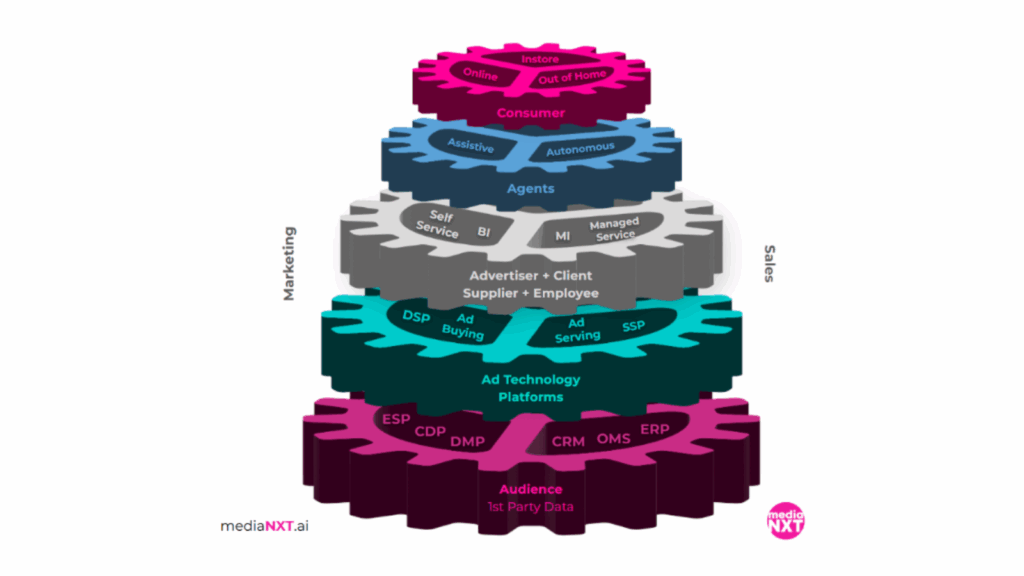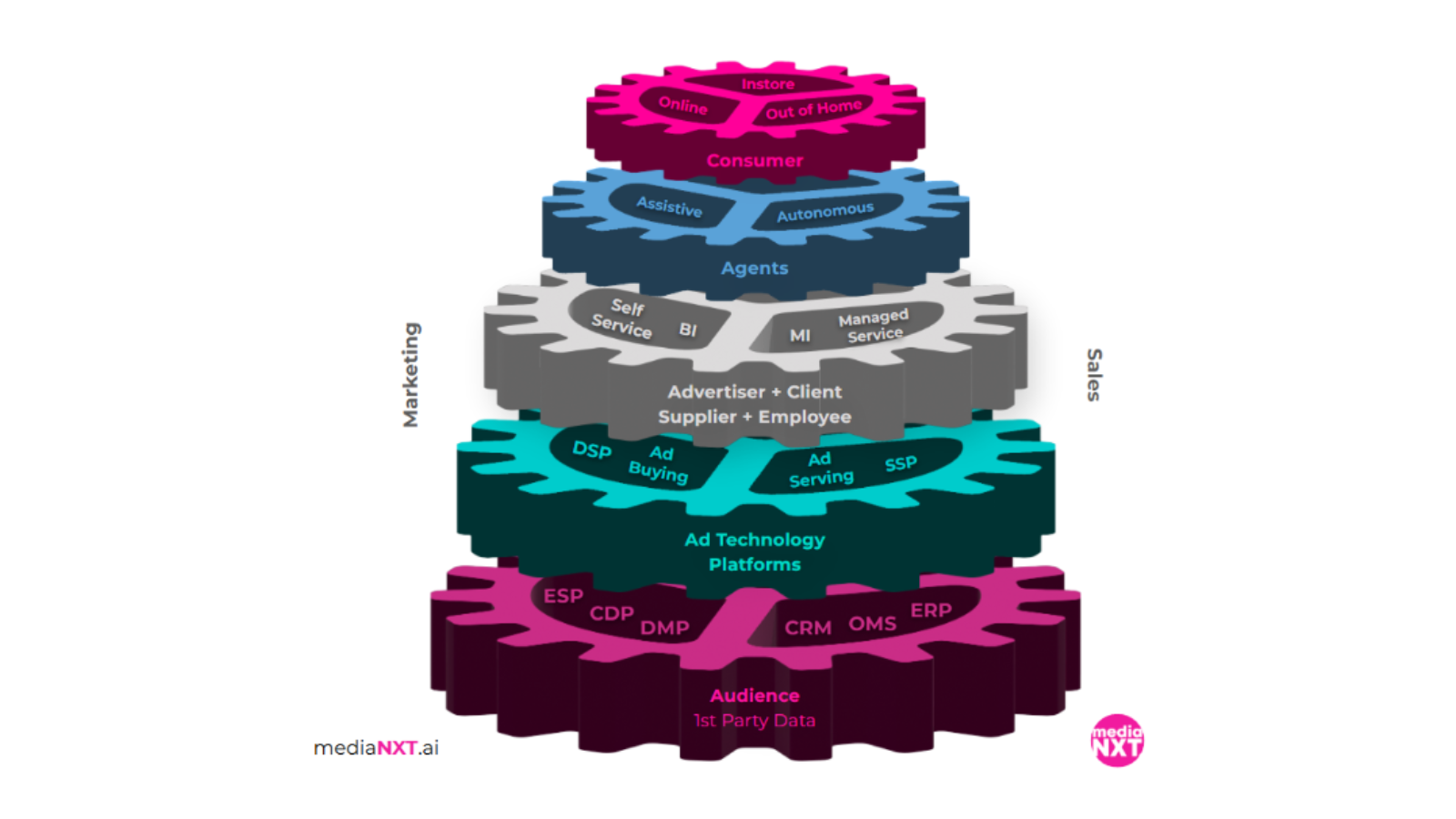If you are new to the ad world or just stepping into retail media, you’ll hear a lot of buzzwords like CRM, OMS, DMP, CDP, ERP, DSP, SSP… not to forget CPC, CPM, CPA, CPL, CPV, ROAS and that’s only the beginning…
There has been a trend towards the ‘must have’ Retail Media Platform (RMP), and most recently the Unified Retail Media Platform (URMP). It’s easy to get lost, or be sold the latest and (apparently) greatest (most likely) AI powered platform.
But seriously, WTF is a URMP? If you’re a retailer or marketplace looking to launch or scale your retail media offering, do you need one, or do you already have one?
In simple terms, you need at least five things;
Below, we take a closer look at the business processes and retail media technology stack required to successfully launch, with a focus on the capabilities needed to:

What It Actually Takes to Build One
Spoiler: it’s not just one shiny platform. It’s an ecosystem of capabilities that allow you to collect, activate, monetise and measure across every stage of the retail media value chain.
Here’s your crash course – the five foundational capabilities every serious retail media network needs to have on point:
1. Audience Targeting: Collect, Harmonise, Segment & Activate First-Party Data
This is the core. Without data, there is no retail media business. You need a robust first-party data strategy that goes beyond just loyalty cards and email lists. We’re talking:

The better your data, the more precise your audience targeting — and the more premium your media offering becomes.
2. Relationship Management: Customers, Brands, Agencies & Partners
Retailers stepping into media become media owners – and that means managing complex relationships:

This isn’t just CRM in the traditional sense — it’s part sales, part service, part platform onboarding. Having a structured approach to relationship and workflow management is key to scale.
3. Media & Inventory Management: Products, Placements & Pricing
What are you selling? How are you pricing it? And who gets access? From banner ads on PDPs to sponsored product placements in search and offsite display, you need:

You’re not just selling shelf space — you’re selling attention, and that’s a finite product.
4. Campaign Activation & Optimisation: From Launch to Learn
This is where the magic happens — when your media becomes measurable. Your tech stack must support:

Retailers who nail this can prove media value in hard commercial terms — the difference between selling impressions and selling outcomes.
5. Revenue Reconciliation: Show Me the Money
Behind every great media network is a rock-solid commercial engine. That means you need:

If your media business grows faster than your back office can support, you’ll feel the pain fast and leave revenue on the table.
So, do you need a Unified Retail Media Platform?
Maybe. But more likely, you need well-connected business processes and a seamless technology stack that cover these five areas.
You don’t have to rip-and-replace what you have — but you do need to get crystal clear on the gaps, shape your strategy, map the journey, and deliver to ignite growth. 🪄

Are you looking to embrace the latest in Data, CRM and AI to simplify your retail media business? Get in touch today.
